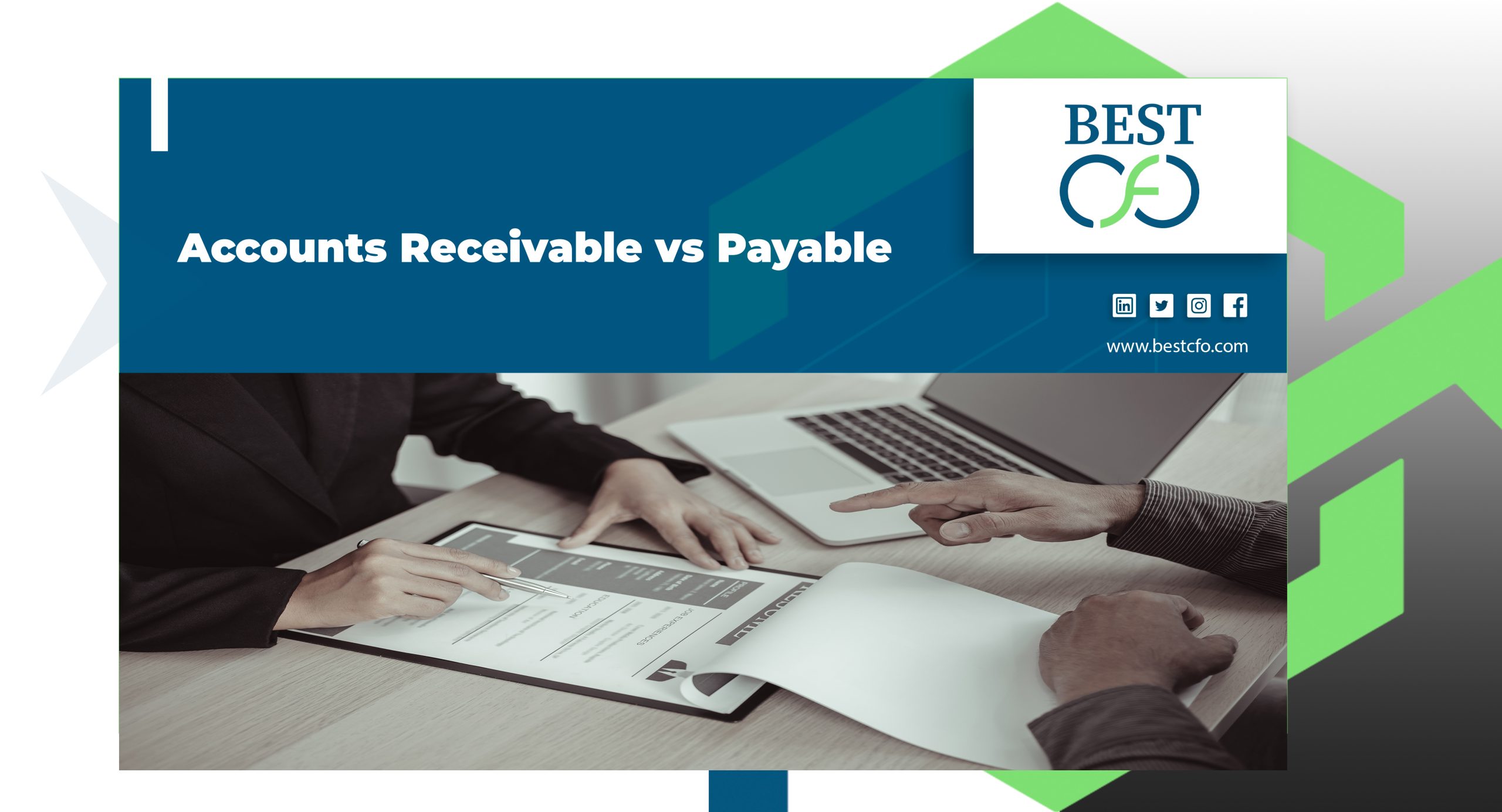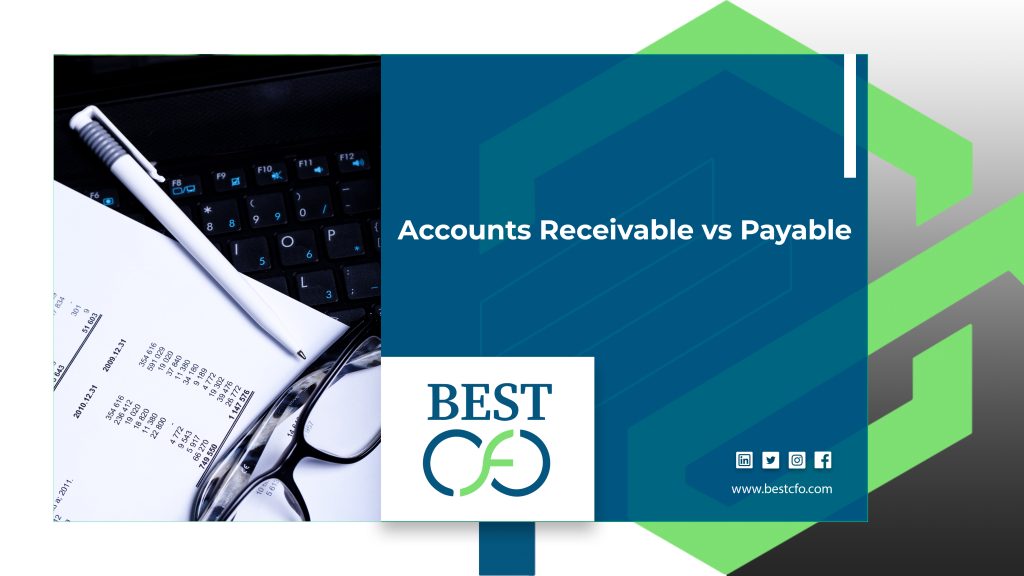
| Getting your Trinity Audio player ready... |
Accounts Receivable vs Payable: Key Differences Explained
Managing money is one of the most important parts of running a business. Two terms that play a big role in this are accounts receivable vs payable. While they may sound similar, they serve opposite purposes in your company’s books.
Understanding the difference between accounts receivable vs payable is key to better financial management, smart decision-making, and keeping your cash flow healthy. In this blog, we’ll explain what accounts receivable and payable are, how they work, and how managing them well can make or break your business.
What is Accounts Receivable (AR)?
Accounts receivable is the money your customers owe you for goods or services you’ve already delivered. It shows up as a short-term asset on your balance sheet because it represents cash your business expects to get soon.
How Accounts Receivable Works?
When your business sells something on credit, instead of getting paid right away, you send an invoice. That amount becomes part of your accounts receivable. For example, if a customer buys office chairs and agrees to pay within 30 days, that amount is recorded as AR.
Examples of Accounts Receivable
- Unpaid invoices
- Credit sales
- Subscriptions billed monthly but not yet paid
- Down payments due at a future date
Role in Cash Flow
AR is important in your cash flow management. If customers don’t pay on time, it can delay your ability to pay your own bills. Tracking AR helps keep your working capital steady and avoids bad debt buildup.
Key Features of Accounts Receivable
- Short-term asset in financial accounting
- Tracks payments expected from customers
- Involves invoice processing, bookkeeping, and debt collection
Importance of Accounts Receivable
- Steady cash flow – Helps plan budgets and pay expenses on time.
- Checks customer credit – AR systems help track which customers are risky.
- Impacts liquidity – More AR means more assets, improving your business’s financial health.
What is Accounts Payable (AP)?
Accounts payable is the opposite of AR. It refers to the money your business owes to others—like vendors or service providers—for products or services you’ve received but haven’t paid for yet.
How Accounts Payable Works
When you get a bill from a supplier, and you agree to pay in a few weeks, that bill goes into your accounts payable. This is a short-term liability, meaning it’s something you need to pay soon.
Examples of Accounts Payable
- Supplier invoices
- Unpaid bills for utilities or rent
- Contractor fees
- Purchase orders awaiting payment
Role in Managing Expenses
AP helps you manage cash outflows and keep track of what you owe others. Failing to handle it properly can lead to late fees, hurt vendor relationships, or damage your credit rating.
Key Features of Accounts Payable
- Short-term liability on your general ledger
- Tracks money owed to suppliers
- Involves payment systems, approvals, and invoice processing
Importance of Accounts Payable
- Maintains vendor trust – Paying on time builds good partnerships.
- Controls spending – Helps businesses avoid overspending.
- Affects credit rating – Late payments can hurt your standing with lenders.
Key Differences Between Accounts Receivable vs Payable
Let’s look at how these two compare:
Feature | Accounts Receivable (AR) | Accounts Payable (AP) |
Definition | Money owed to your business | Money your business owes |
Type | Asset | Liability |
Balance Sheet Location | Listed under current assets | Listed under current liabilities |
Effect on Cash Flow | Increases cash inflow | Leads to cash outflow |
Role in Business | Keeps track of incoming funds | Manages outgoing payments |

Impact on Financial Statements
AR adds to your assets, improving your company’s value on paper. AP, on the other hand, increases liabilities, showing what you owe. Both directly affect working capital and your ability to handle expenses.
Cash Flow Considerations
Efficient AR means money is coming in regularly. Poor AP management could mean missed payments or penalties. Together, they shape your cash flow statement.
Management Strategies
For AR:
- Set clear payment terms
- Send reminders before due dates
- Use tools like QuickBooks or Xero
For AP:
- Schedule payments to avoid late fees
- Take advantage of early payment discounts
- Negotiate with vendors for better terms
How AR and AP Work Together in Business
AR and AP are two sides of the same coin. A strong AR process means your business has cash coming in. A well-managed AP process means you’re not paying too early or too late.
For example, if a company receives a payment from a customer today, it can use that money to pay a supplier tomorrow. This balance keeps the business running smoothly and helps manage risk and liquidity.
Common Challenges in Managing Accounts Receivable vs Payable
Here are few challenges in managing account receivable vs payable:
AR Challenges
- Late or missing payments
- Disorganized invoicing
- Difficulty tracking what’s been paid
AP Challenges
- Missed due dates and late fees
- Duplicate payments or invoice fraud
- Poor cash flow forecasting
Solutions
- Use automation tools like FreshBooks
- Create clear payment policies
- Conduct regular audits and reconciliations
- Apply internal controls and separation of duties
Best Practices for Managing AR and AP
The following are the best practices for managing AR and AP
AR Best Practices
- Check a customer’s credit before offering terms
- Send invoices right after the sale
- Provide multiple payment options like credit card, direct debit, or platforms like GoCardless
AP Best Practices
- Time payments to balance cash outflow
- Build good communication with vendors
- Use AP automation and approval systems
Role of Technology
Today, tools like AI, cloud accounting, and financial software have made managing AR and AP easier. These tools offer:
- Real-time updates
- Less human error
- Better planning with predictive analytics
Using solutions like NetSuite, Stripe, or Tipalti can also improve invoice tracking, detect fraud, and offer data analysis to improve performance.
Conclusion
In business, knowing the difference between accounts receivable vs payable is more than just a bookkeeping task—it’s about financial management, stability, and growth. AR helps you bring money in, while AP helps you control money going out. Both are crucial for maintaining a strong financial position.
Managing AR and AP properly leads to better financial statements, smoother operations, and a more stable business. Whether you run a small business, work in the service industry, or manage a large corporation, keeping a close eye on AR and AP is key.
Want expert help handling your company’s finances? Let Best CFO guide you toward smarter money management today!
FAQs
1: What happens if accounts receivable are not collected?
Uncollected AR can turn into bad debt, reducing your revenue and cash flow.
2: Can accounts payable affect a company’s credit score?
Yes. Late payments to suppliers or missed bills can harm your company’s creditworthiness.
3: How often should businesses reconcile AR and AP?
At least monthly. Frequent checks help spot errors, avoid fraud, and maintain accurate records.
4: What’s the difference between accounts payable and expenses?
AP is the money owed but not yet paid. An expense is recorded once the service or product is used, whether paid for or not.
Related Posts
From Finance to Future-Proofing: The Strategic CFO for IT
From Finance to Future-Proofing: The Strategic CFO for IT Suppose a traditional CFO sitting at…
CFO vs Finance Manager: Choosing The Right One For You
CFO vs Finance Manager: Choosing The Right One For You The finance world can be…
When Should You Outsource My CFO? – The Guide
When Should You Outsource My CFO? – The Guide Every business, no matter how small…
Top 5 Reasons Why You Should Outsource HR
Top 5 Reasons Why You Should Outsource HR Outsourcing is gaining popularity among businesses looking…
 Demos
Demos  Colors
Colors  Docs
Docs  Support
Support 










